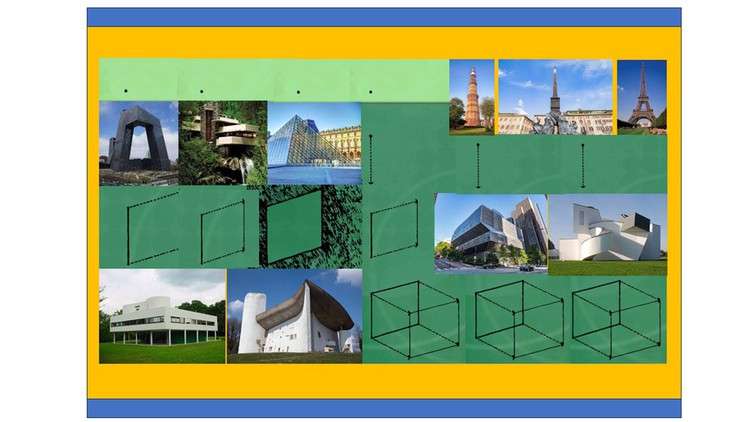
Role and significance of point, line, plane, and volume, Applying these elements to create well-balanced composition
What you will learn
Gain a deep comprehension of the basic elements in architecture, including points, lines, planes, and volumes.
Explore how these elements contribute to the creation and articulation of architectural form.
Analyze and interpret architectural designs based on the effective use of these elements.
Gain practical skills in applying these elements to create well-balanced and aesthetically pleasing architectural compositions.
Cultivate a heightened appreciation for the artistic and functional dimensions of architectural expression.
Description
In the 3-dimensional space, people can take up various positions from where they look towards things. These positions are ‘location’ and ‘place’ inside a space. The positions are ‘points’.
When we are at one point and we want to go to another point, we will need to travel a distance. The shortest path between two points in our world is a straight line.
When we look at things we see their surface. The surface can be flat, bent, round, and really can take any form or shape. Here we talk about a plane.
We do not only look at surfaces, we can also walk around objects, things with contents. Here we talk about volume.
Everything that can been seen or noticed in a 3d space is either a point, line, plane or volume. Every architecture or design of a structure or solution consists of points, lines, planes, and volumes. That is why these four things are called the basic elements of architecture and design.
“Elements in Architecture- Point, Line, Plane and Volume” is a transformative course that unravels the mysteries behind the fundamental components of point, line, plane, and form. In this exploration, we will delve into the core principles that architects employ to shape spaces, create visual narratives, and define the built environment. Whether you’re a budding architect, a design enthusiast, or someone eager to appreciate the essence of architectural composition, this course is your gateway to a deeper understanding of the elements that give form to our surroundings.
Content